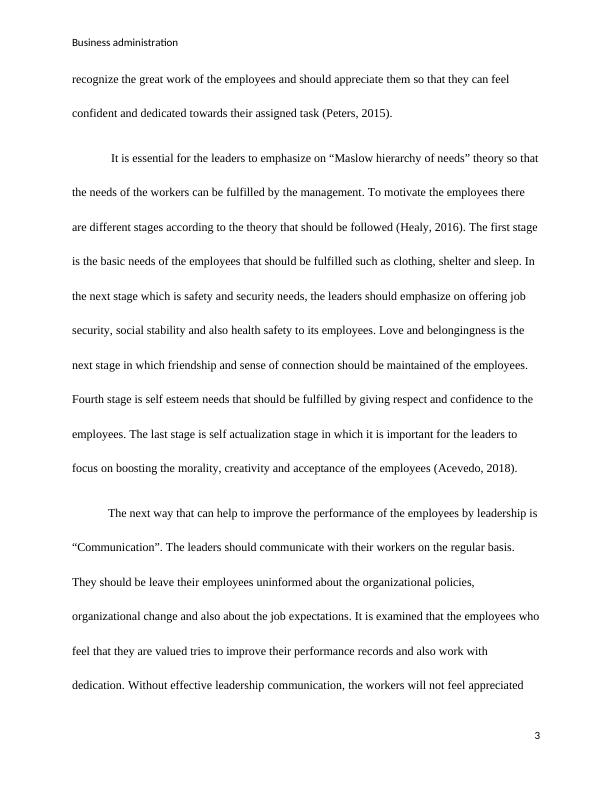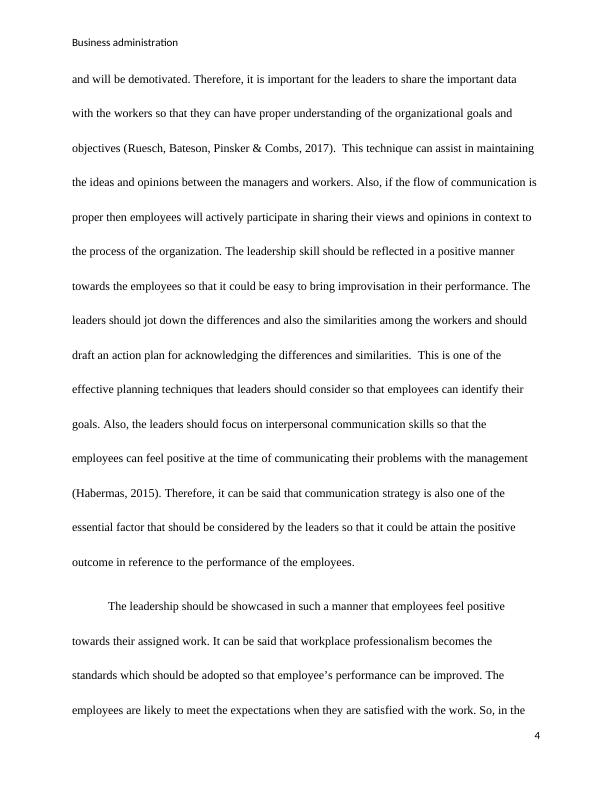Improving Employee Performance through Leadership
12 Pages2399 Words493 Views
Added on 2023-04-06
About This Document
This article discusses how effective leadership can improve employee performance and motivation. It explores different strategies such as motivation, communication, training, and accountability.
Improving Employee Performance through Leadership
Added on 2023-04-06
ShareRelated Documents
End of preview
Want to access all the pages? Upload your documents or become a member.
Maslow Hierarchy of Needs and Job Satisfaction
|10
|2372
|78
Charismatic and Contingency Leadership Theories in Management
|4
|912
|23
Motivation and Reinforcement Theory
|3
|588
|479
People and Organizational Management: Motivation, Teamwork, and Change Management in Tesco
|13
|3625
|74
Engaging and Motivating Staff: The Key to Strategic Human Resource Management
|12
|3653
|462
Organization behavior.
|7
|2009
|29




